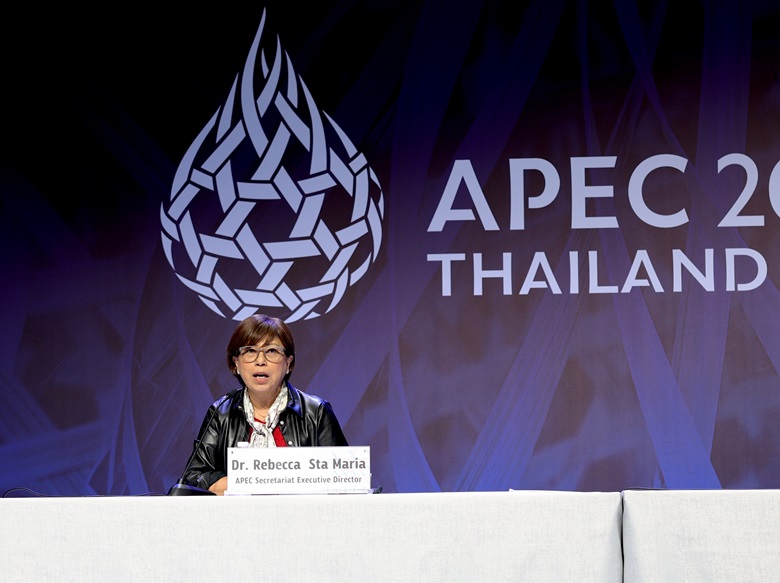
APEC's Bangkok Goals for a bio-circular-green Asia-Pacific economy will set the region on a path of prosperity and sustainability
With November's cluster of multilateral meetings-G20, COP27 and the APEC Economic Leaders' Meeting, for instance-there is some good news: we don't have to create high carbon emissions to produce economic growth.
Consider the growing number of high-to-middle-income economies that have maintained growth while cutting emissions. It's welcome news in 2022-a year of renewed vigor and live gatherings once again after the gloom of the COVID-19 pandemic. Its effects on the health, social fabric and economic well-being of the world have been severe, its damage incalculable.
The pandemic has made one thing clear: global crises can only be dealt with by many governments working together towards a single goal.
Right now, there is nothing more important than climate change.
To be sure, it is a global threat, but its effects are disproportionately felt in the Asia-Pacific region, where APEC's 21 member economies are situated. Consider the following: since APEC's inception in 1989, the region has been buffeted by 36 percent of the world's natural disasters. Disaster-related losses in APEC, most of them weather-related, have topped a whopping USD 111 billion annually.
To compound matters, the World Bank estimates a 7.3 percent loss of GDP across APEC by year 2100. Much of the loss will be experienced by developing economies nearer the equator due to coastal flooding.
As if by karmic circumstance, APEC member economies produce greenhouse emissions at disproportionately higher rates than their share of output or population. Between 1990 and 2018, the region's greenhouse gas emissions grew 1.9 percent annually, higher than the world's average of 1.1 percent.
In crisis there is opportunity. Indeed, there's never been a more opportune moment for APEC to confront the climate challenge than now, more so due to the convergence of certain factors.
For one thing, the massive post-COVID stimuli deployed by governments to accelerate recovery could-or should-be used, in part, to further integrate environmental sustainability with growth. Also, this year's host economy and next year's are both supportive of accelerating sustainability.
The US is set to host in 2023 and we can expect priorities focused on environmental resilience and climate change. Indeed, the last APEC year hosted by the US, in 2011, saw members agreeing to reduce energy intensity in the Asia-Pacific by 45 percent by 2035-up from a previous commitment of 25 percent by 2030.
More germane to the present is the commitment of Thailand, the host of 2022, to sustainability. The theme this year-"Open, Connect, and Balance"-reflects Thailand's prioritization of an inclusive and sustainable post-pandemic recovery. As APEC chair, its goal is to spread the use of its flagship environmental initiative, the bio-circular-green economy model, throughout APEC.
The BCG concept is a catch-all approach to achieving sustainability. It ropes three forms of an environment-friendly-economy together:
- the bioeconomy which concerns renewable resources and bio-based materials;
- the circular economy, which deals with regenerative production-consumption systems, eliminating waste, reusing, recycling, composting, and the like;
- the green economy, or leveraging ecosystem processes for human benefit without jeopardizing sustainability.
We hope the BCG economic model will be used as a post-pandemic growth strategy, a framework for addressing long-term economic issues.
Many challenges lie ahead with climate change. Its solutions must therefore be interconnected and collaborative, where science and technology, academic research and policy, and public and private sectors join to promote the optimum use of resources.
Embedding the BCG economic model into APEC's workstreams will mean turning it into a roadmap. Thailand's lodestar document will be called the Bangkok Goals, after similar geographically tagged initiatives in the APEC scripture. Examples include the Bogor Goals, the Putrajaya Vision and the La Serena Roadmap.
"The Bangkok Goals will advance APEC's sustainability and inclusion objectives in a bold, comprehensive and ambitious manner," according to Thani Thongphakdi, Permanent Secretary for Foreign Affairs and the 2022 Chair of APEC Senior Officials. It will reinforce and contribute to ongoing global actions such as the ones set in Kyoto, Paris and Glasgow.
To implement these goals, APEC will accelerate the creation of a conducive regulatory framework, ramp up capacity building and infrastructure development, and will do what it does best-creating networks among stakeholders to foster discussion and incubate ideas.
I mentioned that certain economic trends are proving that growth doesn't have to come at the price of high carbon emissions. It's a trend that is more prevalent in developed economies, predominantly in Europe but with a few standouts in the APEC region.
APEC economies represent diversity in terms of culture, politics, size and wealth. For initiatives to flourish, they will need to be inclusive, flexible and designed to benefit the majority rather than the few. A greenlight from member economies on the Bangkok Goals and passage into APEC's long game as a workstream, will set the region on a growth trajectory towards a more sustainable, inclusive and resilient future.






